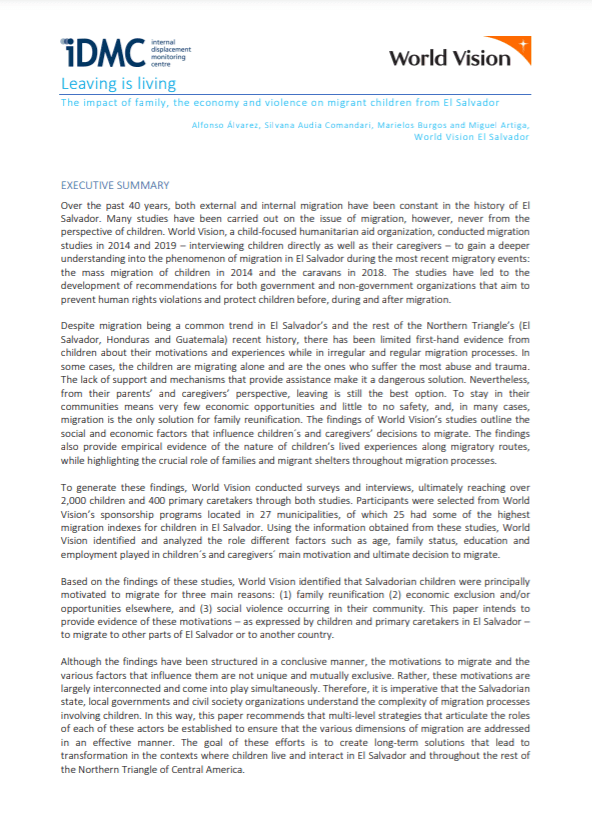Leaving is Living: impact of family, the economy and violence on migrant children from El Salvador
Author(s): Alfonso Alvarez, Silvana Audia Comandari, Marielos Burgos and Miguel Artiga
Language: English
Over the past 40 years, both external and internal migration have been constant in the history of El Salvador. Many studies have been carried out on the issue of migration, however, never from the perspective of children. World Vision, a child-focused humanitarian aid organization, conducted migration studies in 2014 and 2019 – interviewing children directly as well as their caregivers – to gain a deeper understanding into the phenomenon of migration in El Salvador during the most recent migratory events: the mass migration of children in 2014 and the caravans in 2018. The studies have led to the development of recommendations for both government and non-government organizations that aim to prevent human rights violations and protect children before, during and after migration.
Despite migration being a common trend in El Salvador’s and the rest of the Northern Triangle’s (El Salvador, Honduras and Guatemala) recent history, there has been limited first-hand evidence from children about their motivations and experiences while in irregular and regular migration processes. In some cases, the children are migrating alone and are the ones who suffer the most abuse and trauma. The lack of support and mechanisms that provide assistance make it a dangerous solution. Nevertheless, from their parents’ and caregivers’ perspective, leaving is still the best option. To stay in their communities means very few economic opportunities and little to no safety, and, in many cases, migration is the only solution for family reunification. The findings of World Vision’s studies outline the social and economic factors that influence children´s and caregivers’ decisions to migrate. The findings also provide empirical evidence of the nature of children’s lived experiences along migratory routes, while highlighting the crucial role of families and migrant shelters throughout migration processes.

